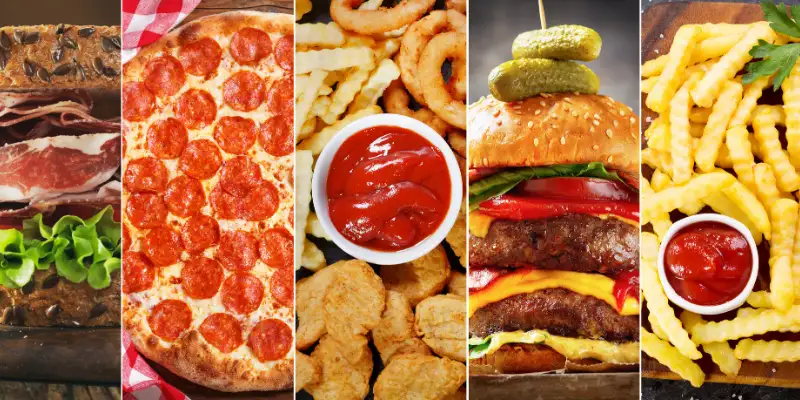These Foods in Your Everyday Life Can Cause Gout

You may assume that gout is a health condition that mainly affects older people, so you may take your health and what you eat for granted. Do you know that younger people can get gout, too? If you are not mindful of the food you eat every day, there is a possible risk of developing gout. Foods you eat every day that are easily accessible and seemingly harmless can be the silent culprits responsible for your next painful flare-up. Now you must wonder, what foods out there in our daily life can cause gout?
What Is Gout?
Gout is a type of arthritis that happens when uric acid or urate crystals accumulate and lead to inflammation in the joints. Uric acid deposits can form lumps underneath the skin around joints or other parts of the body like the elbows, fingertips, and ears. The lump is called a tophus (from Latin), which means a type of stone. Tophi (several lumps) can develop in individuals who have experienced gout for many years. These lumps may drain chalky material.
There are two types of gout:
Acute gout: This is a painful condition that usually impacts just one joint.
Chronic gout: This condition is characterised by repeated episodes of pain and inflammation. Multiple joints may be affected instead of only one.
Who Is at Risk of Gout?
You are at an increased risk of developing gout if you check any of these risk factors below:
You are a man: Gout is more common in men between 30 and 45 years old.
You are a postmenopausal woman: Women become more susceptible after 55 years old.
You have underlying medical conditions: Having high blood pressure, diabetes, obesity, and chronic kidney disease can increase the risk of gout.
What Are the Symptoms of Gout?
Acute Gout Symptoms
These are some symptoms of acute gout that you should watch out for. Earlier intervention can lead to a smoother treatment journey.
Just one or a few joints are affected in most cases, especially parts like the big toe, knee, or ankle joints. Sometimes, many joints start to swell and hurt.
The pain starts abruptly, usually during the night. It is usually serious and described as throbbing, crushing, or excruciating.
The joint is warm and red, usually very tender and swollen; it even hurts to put a sheet or blanket over that part.
There may be a fever.
The attack may go away within a few days, but sometimes it may come back. Additional attacks usually last longer.
The pain and swelling usually go away after the first attack. Most individuals will experience recurrent attacks in the next 6 to 12 months after the initial episode.
Chronic Gout Symptoms
Some individuals may develop chronic gout, also called gouty arthritis. This condition can cause joint damage and loss of motion in the joints. Most of the time, whoever has chronic gout will experience joint pain and other symptoms
What Causes Gout, and What Are the Foods that Cause it?
Gout is caused by an accumulation of uric acid in the joints. Excess uric acid may be caused by some things, such as:
The body makes too much uric acid.
The kidneys may not eliminate enough uric acid.
You have been eating a lot of purine-rich foods. Purines become uric acid in the body.
These are the types of trigger foods you should avoid, as they can cause gout attacks:
Specific meats
Game meats
Internal organs (kidney, brains, liver)
Large portions of red meat
Seafood
Anchovies
Herring
Scallops
Sardines
Mackerel
The below can trigger gout attacks as well:
Drinking alcohol
Eating a lot of high-protein foods
Emotional stress
Tiredness (fatigue)
Illness
Surgery
What Are the Treatment Options for Gout?
Gout treatment depends on your symptoms, age, overall health, and how serious the condition is. Treatment is usually short-term and targeted solely at controlling the flare’s duration. The goal in managing a gout flare is to relieve inflammation quickly and safely, which helps ease pain and limit disability.

These lifestyle adjustments may be included in gout treatment:
In some cases, medications may be necessary, such as:
Anti-inflammatory medication to soothe the pain and inflammation of an acute gout attack:
Long-term urate-lowering therapy (ULT) to decrease the level of uric acid in the blood to prevent gout attacks.
In certain cases, surgery is required to remove large uric acid crystals (tophi).
Speak to your doctor about the risks, benefits, and potential side effects of all medicines.
Care at Prince Court Medical Centre
Gout can be challenging to deal with, which is why it is a good idea to start caring for your health early on. The good news? You don’t have to completely give up the foods you love. It is all about balance. Enjoy them in moderation instead of making them an everyday habit.
At Prince Court Medical Centre in Kuala Lumpur, our experienced team of
rheumatologists and advanced facilities are here to provide comprehensive care for rheumatic conditions such as gout. Let us support you in achieving better health and quality of life.



















